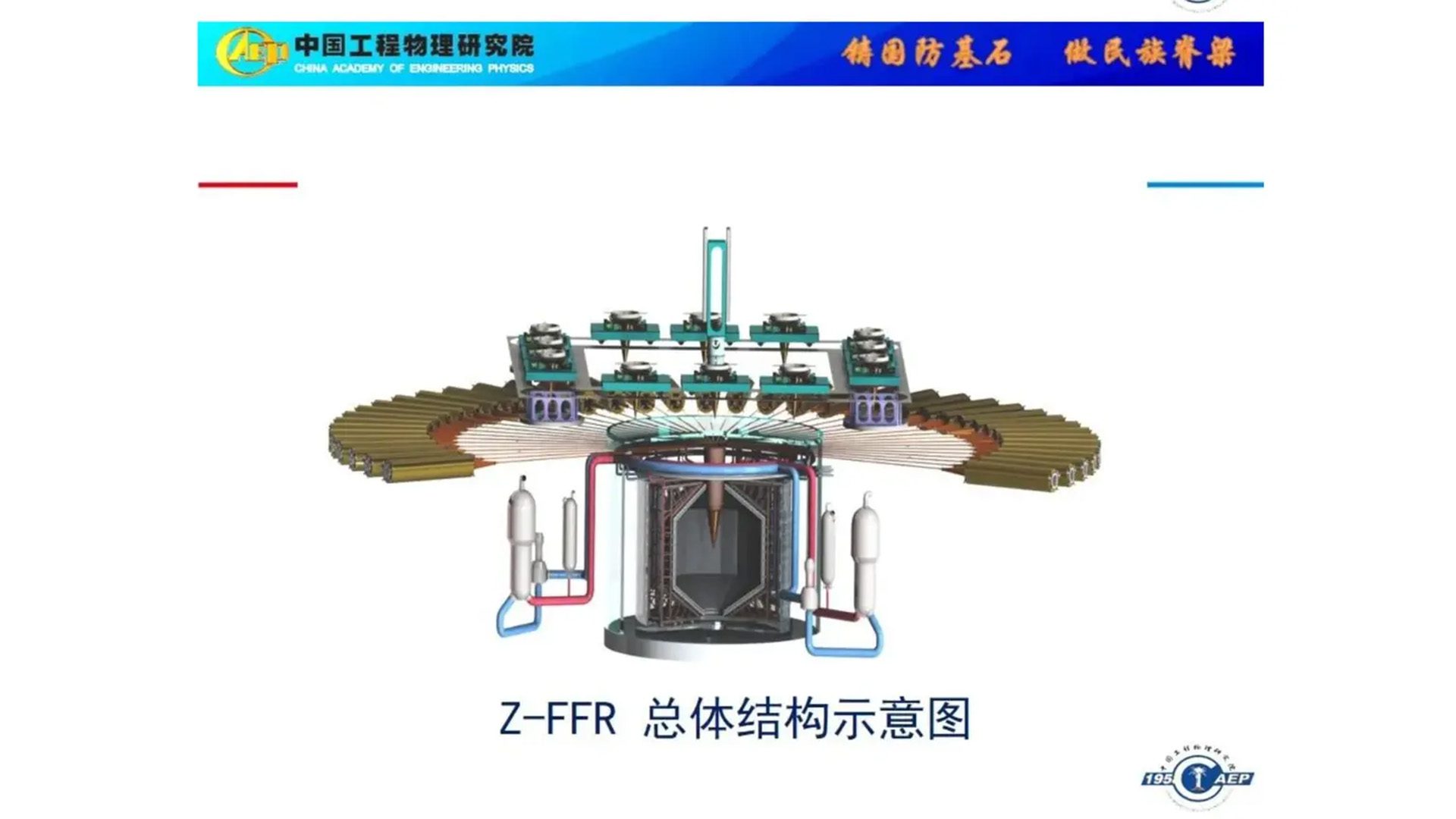Chinese scientists announced that they could achieve unlimited clean energy through nuclear fusion by 2028. Professor Peng Xianjue of the Chinese Academy of Engineering Physics presented the news during an online meeting in September, announcing that the Chinese government approved the construction of the world’s largest pulse-powered plant in Chengdu, Sichuan province.
The mega lab will host China’s nuclear fusion reactor, known as Z-FFR, which is due to be built by 2025. The lab aims to create nuclear energy by using an incredibly strong electric charge to ignite a small number of two types of hydrogen isotopes—deuterium and tritium. The fusion energy this creates will drive particles into uranium, which will power the plant’s nuclear fission reactor.
This complex approach requires several high-performance power capacitors and a strong reaction chamber to handle thousands of explosive electric shocks every day. It also must include special wires that can transmit the strongest electric currents on Earth. If successful, Peng’s team estimates that the power could become commercially available by 2035. As Peng described in the meeting, “Fusion ignition is the jewel in the crown of science and technology in today’s world.”

Nuclear Fusion Challenges
Creating nuclear fusion on Earth is one of scientists’ and engineers’ greatest goals but hardest challenges. For energy purposes, a fusion reaction is about four million times more energetic than a chemical reaction, such as burning coal, oil, or gas, and it does not give off any greenhouse gas emissions. Fusion reactors are also expected to have a much lower risk for nuclear proliferation in comparison to current nuclear reactors, and there is no risk of runaway reactions.
However, in order to fuse, hydrogen atoms need to be extremely hot and packed tightly and long enough to collide frequently. A fusion power plant thus requires developing materials that will withstand extreme environments, getting the plasma to sustain itself without external heating, transferring power efficiently, and creating tritium for fuel. In other words, sustaining nuclear fusion is no easy feat.
Fusion Progress
Scientists have achieved nuclear fusion in the lab, but have not been able to sustain it for a long enough time.
At the beginning of 2022, for example, China announced that its “artificial sun” reactor sustained a temperature of 70 million degrees celsius for more than 17 minutes. This was achieved by heating plasma inside a donut-shaped reactor called a tokamak.
In February 2022, the Joint European Torus (JET) facility in the United Kingdom generated 59 megajoules of sustained energy for five seconds. This is enough energy to power 35,000 homes during that time. This energy was also produced in a tokamak machine where .1 milligrams of deuterium and tritium were heated to temperatures ten times hotter than the center of the sun to create plasma.
The data from JET’s fusion experiment will help ITER, the world’s largest nuclear fusion project which is currently being built in Southern France. ITER’s goal is to demonstrate the scientific and technological feasibility of fusion, and it is a collaboration between seven members: China, the European Union, India, Japan, South Korea, Russia, and the United States. ITER is expected to come online as soon as 2025, with a prototype fusion power plant being ready by 2050.
For more information about ITER and nuclear fusion energy, check out our 4-Part nuclear energy exploration with episodes, articles, podcasts, and lesson plans HERE.
Or, tune in to Tomorrow’s World Today on the Science Channel at 8:30 am ET on Saturday, October 1, and Discovery at 6:30 ET/PT on Sunday, October 2 to watch the first part of our nuclear exploration.
Check out more of the latest clean energy news and see how shifting to clean energy could save the world trillions of dollars, a foundation will award $3 million for clean energy grants, a career as wind turbine technician works, and hundreds of coal power plants could be converted to nuclear.







